Cross Country vs Track Running: What is the Difference?
Author:
Reviewed by:
(Head of Sport Science, 20 years of Oly Lifting experience, PhD Sport Science)
Unlock your full potential by engaging with our experts and community! Have questions about your fitness journey or looking for expert advice on weightlifting techniques? Don’t hesitate — leave a comment below and Oleksandr Zagrebelnyi will provide a personalized answer and insights to help you reach your goals.
Torokhtiy is reader-supported. Some links are affiliate links, and we may earn a commission at no extra cost to you. See our disclosure page for details.
It’s easy to get confused about the differences between cross country vs track running. Although they have similarities, there are distinct differences that make them unique sports.
This blog post explores some of the major differences between cross country and track running so you can decide which type of race best suits your interests and skills.
We’ll take a look at how each type of race is different from one another, what advantages they offer participants, as well as practical advice for training for either sport.
What is the difference between Cross Country vs Track Running? – Cross country running takes place on natural terrain, such as grass and trails, and can range from 2k up to 10k in length. Competitions require runners to have both speed and endurance. Track races are held on synthetic or rubberized surfaces, with distances ranging from 100m sprints up to 10k long runs.

What Is Cross Country Running?
Cross country running, also known as cross-country or XC, is an outdoor running sport pursued on a variety of natural terrain surfaces, such as grass, dirt roads, and trails. It typically includes stretches of hills and valleys that require runners to have both speed and endurance.
Wondering when is cross country season? It usually takes place during fall in the US.
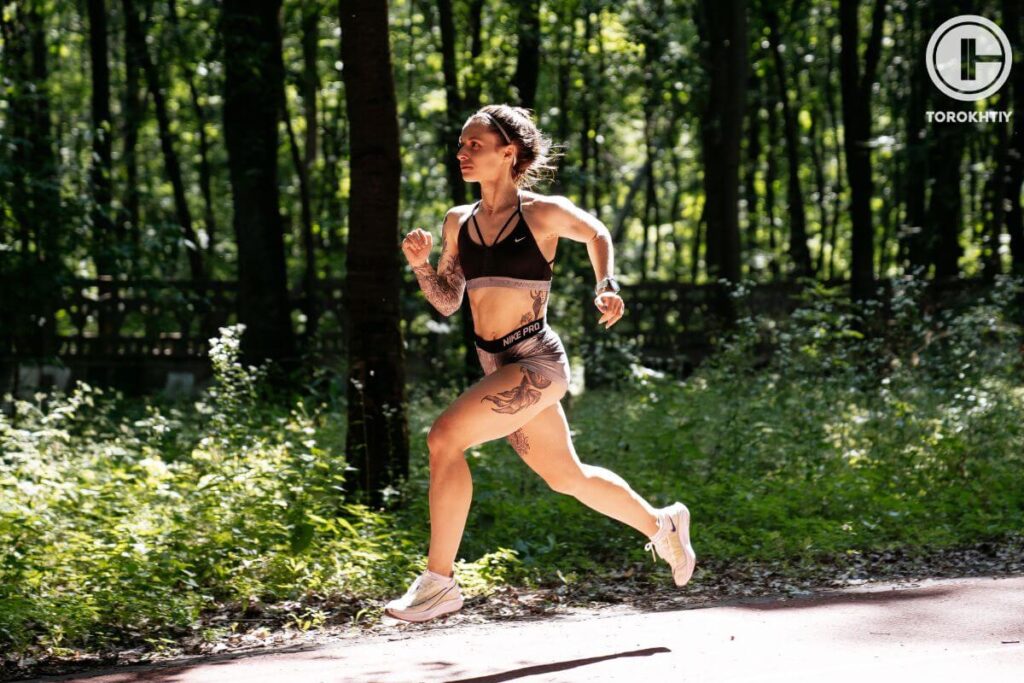
The competition format involves teams racing against each other, with individual scoring based upon time rather than position. Cross country races can range from 2 kilometers (1.2 miles) to 10 kilometers (6.2 miles).
Tips From the Champ
In addition to training hard for speed and strength, it’s important for runners to be able to adapt quickly during the race itself. The route may involve changes in weather conditions or even unexpected obstacles.
Running Coach Nike Run Club Kyiv
What Is Track Running?
Track running is the sport of running races on an oval track. Track runners usually specialize in different distances, depending upon their strengths or preferences. The most common distances are short sprints, such as 100m and 200m.

Now, let’s explore the difference between cross country and track:
Cross Country vs. Track: The Main Differences
There are many key differences between track and field vs. cross country, ranging from terrain and weather to length of races, competition structure, and differences in skills required for each type of running.
Longer distance races include 800m, 1 mile (1600 meters), 2 miles (3200 meters), or more. Track runners train for each event differently. Sprint training focuses on developing explosiveness, while longer distance events require endurance-building strategies such as long intervals and tempo runs to increase lactate threshold capacity.
1. Terrain and Weather Differences
What is cross country vs. track difference? The key difference between cross country and track running lies in the type of terrain covered. Cross country races are held on natural terrain, such as dirt or grass, and feature hills, mud trails, and obstacles like water hazards or fallen trees.
Weather conditions can severely affect run times in cross country running events. They make competition unpredictable, even for elite athletes.
On the other hand, track races take place on a synthetic track surface typically made of rubber or cinder, making them quite predictable. Track runners tend to get more consistent weather conditions and a consistent overall experience throughout their races.

2. The Length of the Races and Scoring
One key difference between cross country and track running is the length of races. Track races are typically shorter distances, usually ranging from 100 meters to 2 miles, while cross country races are often much longer, most commonly 5 kilometers (3.1 miles) or more.
Cross country racing also has a different scoring system compared with track events. Individual runners’ placements within a race contribute to the team’s overall score. The lower the number scored by a given team, the better that team has performed in a particular race. On the other hand, track races are individual events.
3. Competition Structure and Starts
Track running is typically a speed competition, with the runners competing individually to finish a specified distance. The competition structure involves multiple heats or lanes, as well as varying courses for each event. The runners’ skills and strategies are tested over different distances, such as sprints, 110-meter hurdles, relay races, etc.
Typically, at least two people compete against each other on a standard running track within their heat. The first across the line usually wins this type of race, unless they impede another competitor in some manner or leave their lane while racing (then disqualification may occur).
Cross country involves mid-distance runs through uneven terrain that can include grassy fields, trimmed pathways, or trails through forests, depending on the location of the race.
These events consist of one singular race along an uneven course. Both running clubs are split into categories based on age group and gender (men’s team, women’s team, junior levels etc.), to create competitions for all ages.
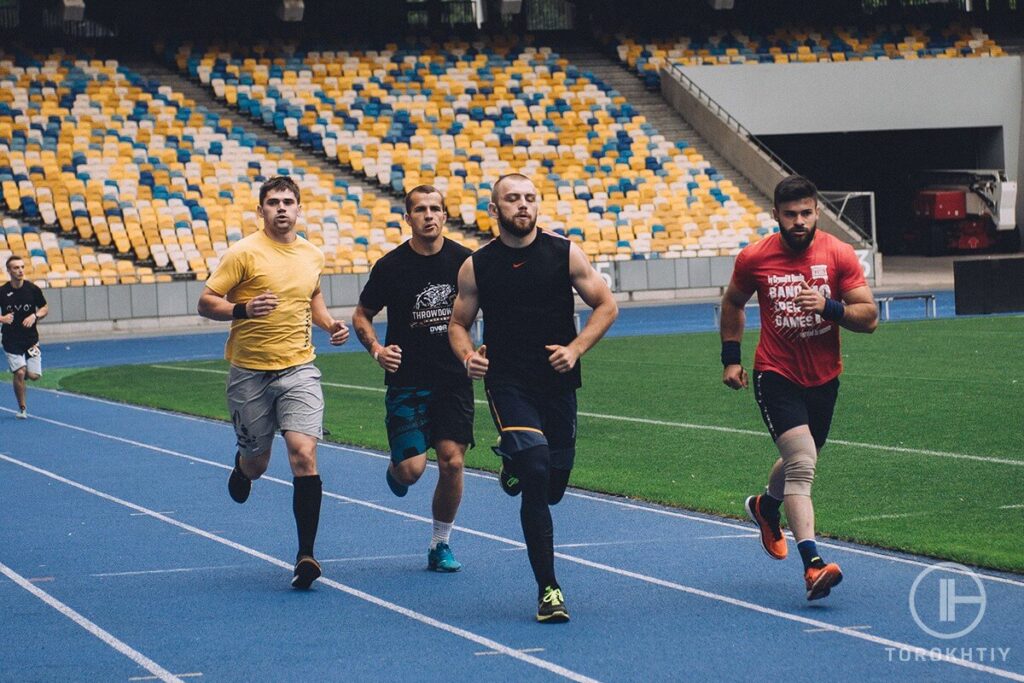
4. Training and Differences in Skills
Cross country training emphasizes endurance and stamina, while track work focuses more on speed and technique. Cross country sees athletes running longer distances through often unpredictable terrain or weather, which requires the development of a wide range of aerobic skills.
On the other hand, track running typically involves sprinting shorter distances with sharp turns and hurdles, which requires both tremendous speed and the ability to rapidly accelerate multiple times during one race.
Training plans tend to be very specific when it comes to each discipline.
Cross country training will involve much longer runs combined with strength exercises. Track runners will spend time focusing on starts and quick acceleration.
The main differences between cross country and track & field distances
| Criteria | Track | Cross-country |
|---|---|---|
| Distance | 100 m–10k | 2k–10k |
| Terrain | Synthetic track surface | Various natural terrains |
| Competition | Personal | Team |
| Training | Speed and acceleration | Endurance and stamina |
Track vs. Cross Country: Summary
Cross country and track differ in a few important ways. Cross country races require more endurance, as they involve longer distances, while track events take place in a controlled environment and focus on speed and agility.
Training is also slightly different. Cross country runners often work on strength training and aerobic fitness, while track runners prioritize speed drills and interval sessions.
Let’s discuss the main pros and cons of cross country vs. track and field:
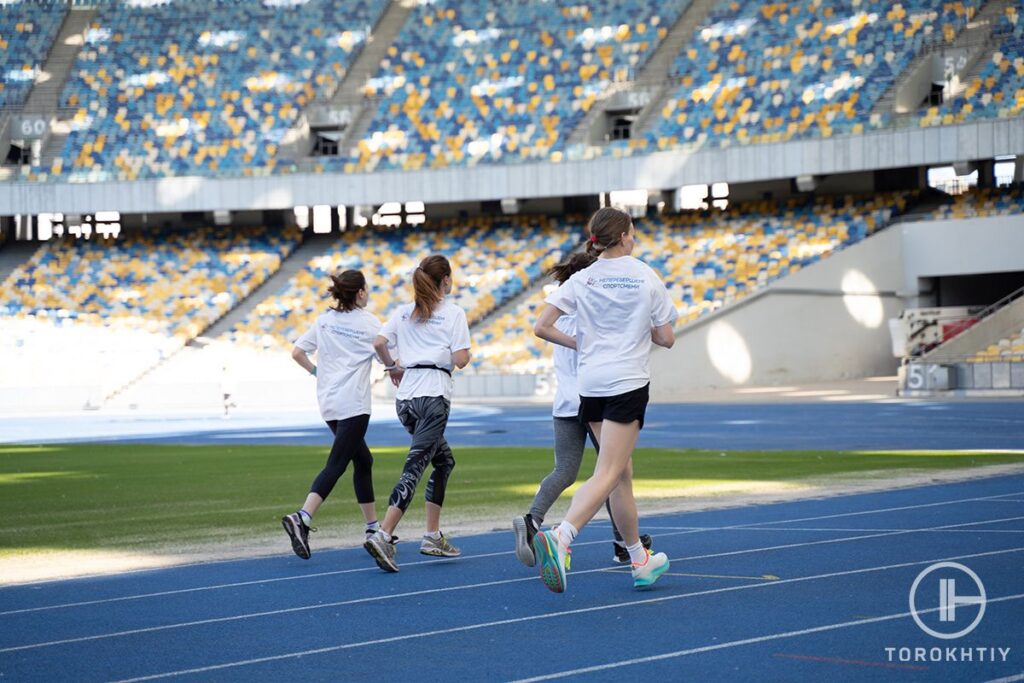
Pros and Cons of Track Running
Track running is associated with speed, intensity, and focus. It requires more explosive power than cross country running and can be measured precisely in terms of time and distance.
During competition, this type of running allows athletes to compete against each other as individuals, creating an atmosphere that puts greater emphasis on personal records and rankings.
With the ability to specialize in particular events comes added physical demands, especially during high-intensity activities such as jumping events.
Positives:
Could be better:
Pros and Cons of Cross Country Running
Cross country running is both physically and mentally demanding, utilizing different sets of skills than track running. For instance, cross country races are run on varied terrain and in unpredictable weather conditions.
This provides athletes with the opportunity to utilize creative problem solving, as they will need to adjust their strategies quickly during a race. They are challenged by unexpected sudden changes in elevation or other obstacles presented by the natural surroundings.
The sport is also more visually stimulating than running on a track, since you are always moving through new terrain and scenery.
On the downside, cross country tends to be much more high-impact than track due to the irregular terrain and varying pitch. There is greater potential for injury, especially from rolled ankles and damage to other joints.
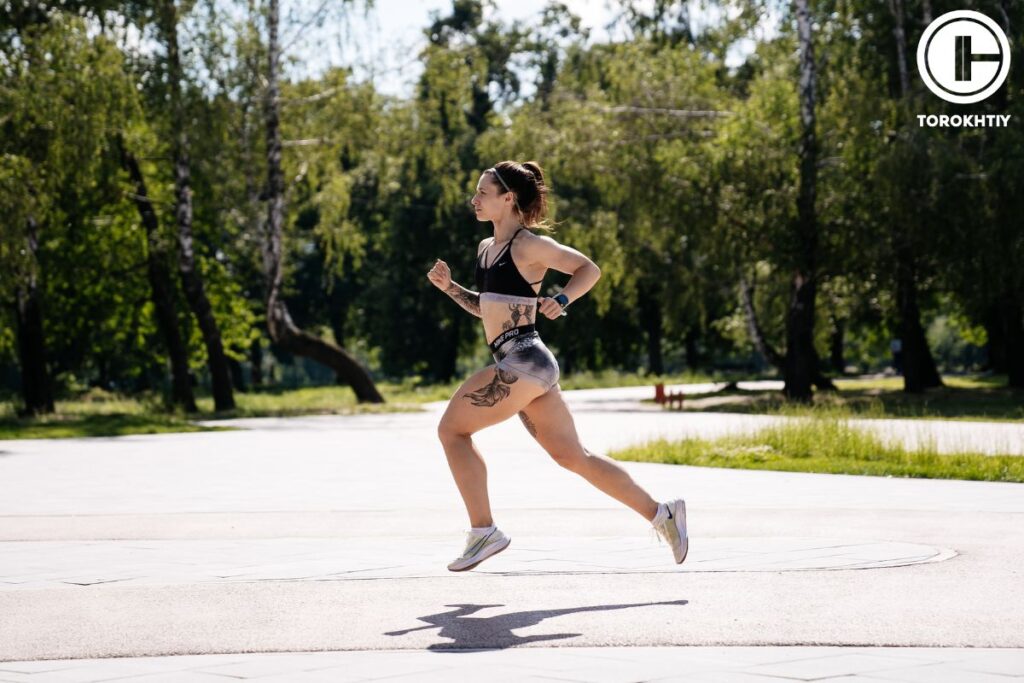
Positives:
Could be better:
Hoka Bondi 8
- Material: Breathable and supportive mesh upper
- Sole Material: Full-length EVA midsole for maximum cushioning
- Outsole (tread feature): Durable rubber outsole with a unique lug pattern
- Drop: 4mm
- Season: Suitable for all seasons
- Special Features: Exceptional cushioning and comfort
- Size: Available in various sizes
- Type: Maximum cushioning running shoe
If you want excellent running or walking shoes or just footwear you’ll be comfortable in, you can’t go wrong with the Hoka Bondi 8.
It’s been upgraded and now they have lighter, softer materials and a new extended heel design. The heel design gives a super soft, balanced feeling from th emoment your heel hits the ground to when you push off with your toes.
As far as the weight goes, it’s around 10.80 ounces, and the heel drop is 4 mm. They’re not too heavy and the lower drop is a good balance between cushioning and feeling connected to the ground.
The Bondi 8 is focused on cushioning and keeps things simple. There’s a good amount of support without any extra stuff that you don’t really need and that would only jack up the price. Take the rear crash pad, for example – it makes for a soft, smooth ride, which is perfect if you like to run outdoors.
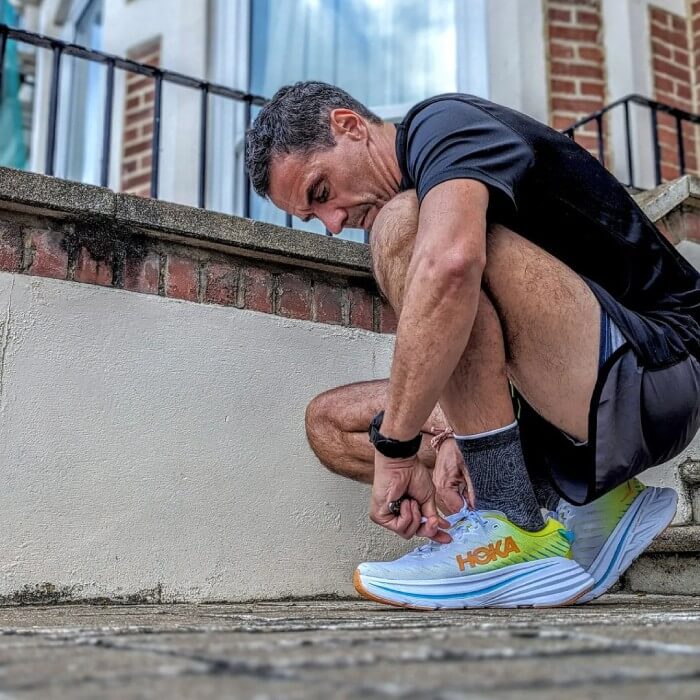
The upper part is made of engineered mesh, which is breathable and keeps your feet cool and dry. The tongue and collar have memory foam and mold to your foot shape. All of these features make the fit snug but flexible, which is exactly what you would want.
The Bondi 8 is eco-friendly because it uses recyclable materials in parts like the mesh and the sockliner. Plus, the shoes are completely vegan, which (if that’s important to you) is nice!
Frequently Asked Questions About Track vs. Cross Country Running
Is Cross Country and Track the Same Thing?
Cross country and track are two totally different sports, each with its own challenges and unique experiences. Cross country races involve running on uneven terrain and through unpredictable natural landscapes, such as fields, forests, and hills. On the other hand, track involves several timed events run around a standard-sized oval track in an indoor stadium or outdoor field.
Which Is Harder – Cross Country or Track?
Actually, they both are hard. Cross country requires a combination of endurance, strategy, and the ability to adapt to changing terrain conditions. Track running places far less emphasis on navigational skills, in favor of speed and technique. Pacing yourself during lap-based races means there is less variability.
Final Thoughts on Track vs. Cross Country Running
Cross country and track running offer unique sets of challenges and opportunities for athletes. Cross country races take place on natural terrain, such as grass, dirt, or trails, while track races are held on a synthetic surface. This has an effect on the kind of racing experience athletes have. Cross country requires more stamina to navigate steep hills and muddy conditions, whereas track is all about speed and agility in a controlled environment.
What kind of running do you prefer? Please share your thoughts in the comments below.
References:
- Longitudinal monitoring of performance in cross-country running by young orienteering runners // ResearchGate: https://www.researchgate.net/publication/291206415_Longitudinal_monitoring_of_performance_in_cross-country_running_by_young_orienteering_runners
- Running World Cross Country Championships: A Unique Model for Pacing Study. // ResearchGate: https://www.researchgate.net/publication/261069718_Running_World_Cross_Country_Championships_A_Unique_Model_for_Pacing_Study
- Effects of Resistance Training on Running Economy and Cross-country Performance // lww Medicine & Science in Sports & Exercise: https://journals.lww.com/acsm-msse/fulltext/2013/12000/effects_of_resistance_training_on_running_economy.14.aspx
- Comparison between running performance in time trials on track and treadmill // ResearchGate: https://www.researchgate.net/publication/289373483_Comparison_between_running_performance_in_time_trials_on_track_and_treadmill
- A Comparison of Three Different Warm-Ups on 800-Meter Running Performance in Elite Division I Track Athletes – A Pilot Study // International Journal of Exercise Science: https://digitalcommons.wku.edu/cgi/viewcontent.cgi?article=3084&context=ijes
- Photos by Torokhtiy Media Team.
Why Trust Us?
With over 20 years in Olympic weightlifting, strength training, nutrition coaching, and general fitness our team does its best to provide the audience with ultimate support and meet the needs and requirements of advanced athletes and professional lifters, as well as people who strive to open new opportunities and develop their physical capabilities with us.
By trusting the recommendations of our certified experts in coaching, nutrition, and sports training programming, as well as scientific consultants, and physiotherapists, we provide you with thorough, well-considered, and scientifically proven content. All the information given in the articles concerning workout programming, separate exercises, and athletic performance, in general, is based on verified data.
The product testing process is described in more detail here.
Oleksandr is a running coach and member of the Nike Run Club coaching team for 8 years. A participant in national and international competitions at distances from one kilometer to the ultra trail. Owner of mountain trail running camps. Nowadays Oleksandr is responsible for creating running training programs for athletes of various levels, coaching personally offline and online, conducts trail running camps in the mountains, participates in competitions.
Reviewed by: Sergii Putsov
Head of Sport Science, PhD
Best Results: Snatch – 165 kg,
C&J – 200 kg
Sergii Putsov, Ph.D., is a former professional weightlifter and National team member, achieving multiple medals in the 94 kg weight category at national competitions. With a Master’s degree in “Olympic & Professional Sport Training” and a Sport Science Ph.D. from the International Olympic Academy, Greece, Sergii now leads as the Head of Sport Science. He specializes in designing training programs, writing insightful blog articles, providing live commentary at international weightlifting events, and conducting educational seminars worldwide alongside Olympic weightlifting expert Oleksiy Torokhtiy.




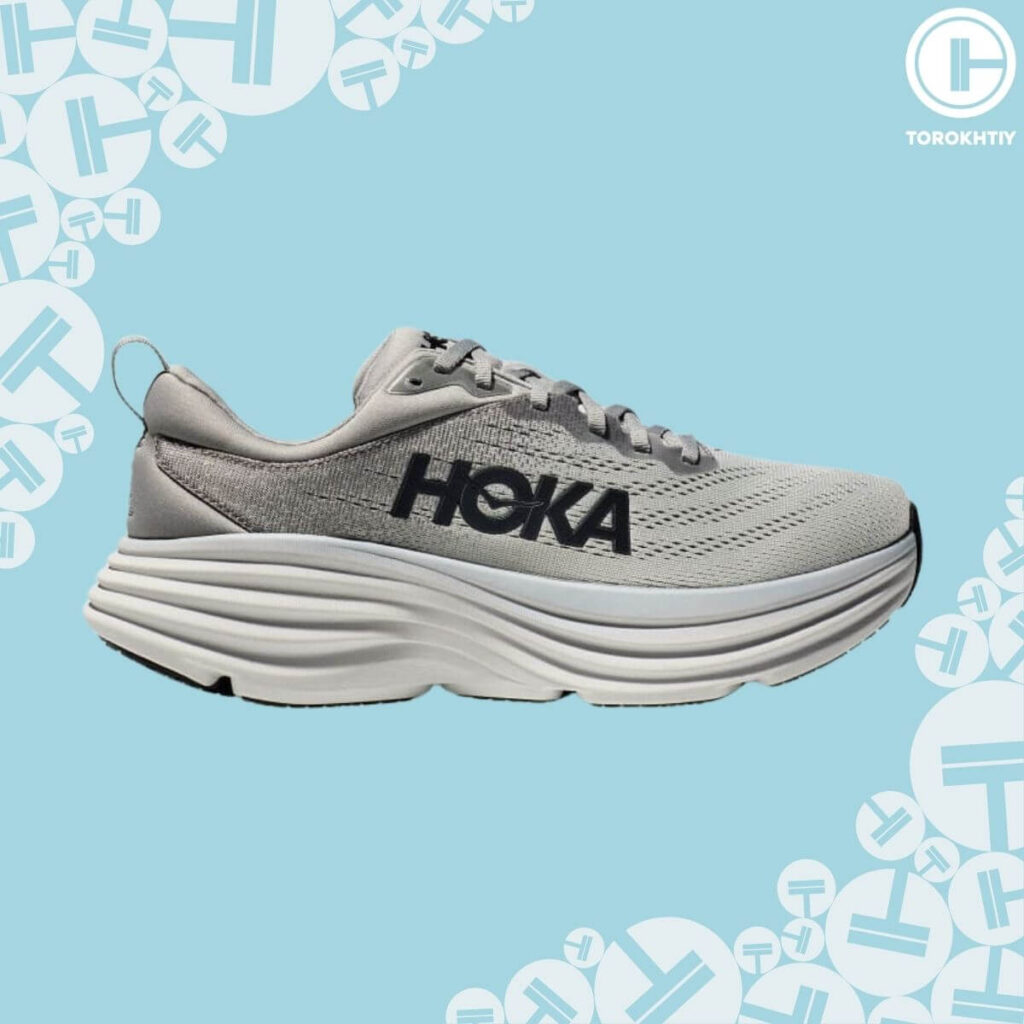
Still have questions after reading our article? Unlock your full potential by engaging with our experts and community! Don’t hesitate — leave a comment below and Oleksandr Zagrebelnyi will provide a personalized answer and insights to help you reach your goals.